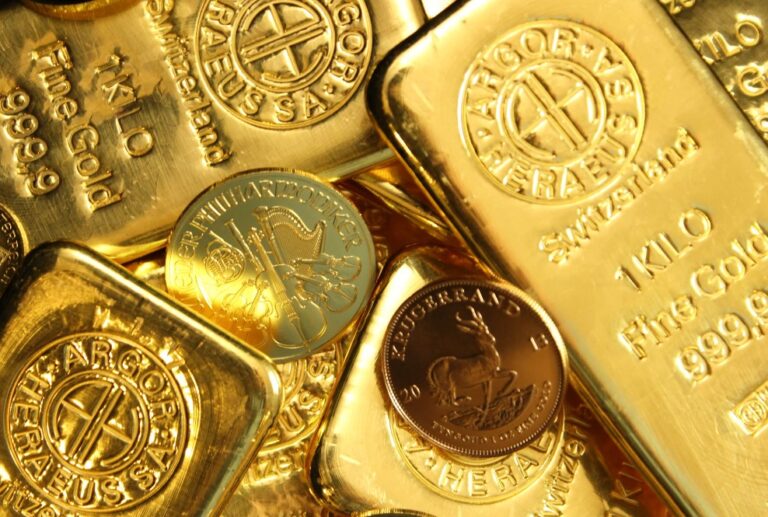When the international situation becomes uncertain, markets always react in the same way. Investors jump on safe-haven assets, and gold, the ultimate safe-haven asset, has been experiencing an uptick in prices in recent days, climbing toward $2,000 an ounce.
Table of Contents
Gold prices on the rise
The psychological ceiling of $2,000 an ounce was broken through last October 27 in London, then in the following days the retreat.
On Wednesday, November 1, the Comex, the world’s leading metals futures exchange, recorded a close at $1,980. On Oct. 7, the day of the Hamas militia incursion into Israeli territory, gold was quoted at $1,832 an ounce.
Confirming gold’s role as a global safe haven asset are charts from the past few years, which show that gold prices reach peaks every time humanity faces a crisis.
The last spikes occurred in reaction to the Covid-19 pandemic, the Russian invasion of Ukraine in February 2022, and the Credit Suisse banking crisis last spring. Now a new spike in reaction to the outbreak of war between Hamas and Israel.
Gold rush around the world
But international crises alone cannot explain these upward swings. Every international event produces financial shockwaves to which the central banks of different countries react in various ways, such as by increasing gold reserves.
And this is where the abc of economics comes in. The immediate effect of increased demand is higher prices. According to World Gold Council, an industry association of major gold mining companies, global gold reserves have increased by an additional 337 tons.
From January to September 2023, world gold reserves increased by +14% compared to the same period in 2022.
The podium of gold accumulators belongs to China (+78 tons in the third quarter of this year), Poland (+57 tons) and Turkey (+39 tons). Significant expenditures were also recorded by Singapore, India and a number of Middle Eastern countries.
This is also happening because high volatility bond yields in the event of serious international crises are affected by uncertainty and discourage some investors.
In addition to governments and citizens, hedge funds also bought gold, as Saxo Bank analysts note. The push to buy, as mentioned, was in response to the resurgence of tensions in the Middle East.
How to buy gold
One can buy gold through different channels. The classic one is buying physical gold in the form of coins or bars, as well as other artifacts. Those interested in the value of the metal go for bullion because in that case the incidence of labor is close to zero.
Buying other gold artifacts (jewelry, figurines, etc…) falls more under buying and selling goldsmithing or artwork than investing in metals. Also, buying physical gold can be done through precious metal sellers or banks that offer gold as an investment option.
Buying physical gold means having to put in extra expenses for storage and insurance. Keeping physical gold at home is not recommended because of the risk of theft.
Another option is gold ETFs, or Exchange Traded Funds. These are exchange-traded funds that invest in physical gold or in companies that mine or produce gold. They involve management costs and fees.
Third option is gold futures. These are contracts that allow you to buy or sell gold at a set price on a future date. They are traded on stock exchanges and carry high risk. They are not recommended for inexperienced users.
The last option is the purchase of shares in gold mining companies. In any case, it should be remembered that among the expenses of buying gold, taxation should also be considered.
Read also: Gold reserves across the world: which countries detain the most












